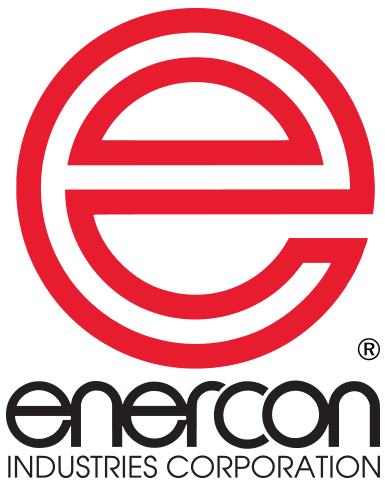Improve Ink Printing Adhesion with Surface Treating
The task of optimizing printing adhesion can be difficult, primarily because of the many process variables which require control. The most critical of these parameters are 1) ink chemistry, 2) substrate quality, 3) surface treatment, and 4) ink transfer method. There are six major printing/decorating processes, each distinguished by the method in which ink and an image are transferred to a substrate, and by the method by which the ink and image are conveyed for adhesion to a substrate. This ink and image transfer can be made to a substrate from an image carrier directly (flexography, gravure, screen, letterpress, and pad printing), or indirectly (lithographic printing) to the substrate by means of a blanket cylinder from the image carrier to the substrate.
The use of direct-contact printing plates, as well as non-contact digital ink transfer technologies such as inkjet, will convey ink and images to a wide range of two- and three-dimensional substrates. However, for all of these technologies, surface preparation will be a primary determinant of the success of ink transfer and the quality of the transferred image.
Methods for surface modification including corona treaters, atmospheric plasma treaters and flame treaters will vary greatly depending on the material to be printed, the printing inks to be used, the printing process applied, and the desired surface properties required for the intended graphics. Almost all surfaces require preparation to establish minimum adhesion requirements. This step is known as pretreatment and post-treatment, and influenced by the base material surface receptivity of the ink layer.
Adhering Solvent-based Inks
All solvent-based inks dry by solvent evaporation. The pigments and resins harden as the solvents evaporate into the air. In many cases they are the only inks that will stick to certain materials and continue to be used when durability and function are required. Solvent inks generally contain ethyl alcohol, glycol ester or glycol ether ester solvents. The resins used in these inks are dissolved into these solvents and can include polyamide, polyurethane and nitro- cellulose with high performance pigments. Solvent-based inks are suitable for printing treated and untreated substrates like polyethylene, PET, OPP, paper, and metallized surfaces. Solvent inks are known for imparting high-definition printing on stack and central impression printing systems, and at either low or high speed. They are also known for a changing viscosity in storage over time because of the evaporation of solvent. This can affect ink lay-down and adhesion.
Since the surface tension of ethyl alcohol, for example, is quite low at 22.3 dynes/cm, the creation of oxidative and carbon-based functionalizations by applying a low-density surface treatment in the range of 36-38 dynes/cm will begin to optimize the adhesion of solvent-based inks. Further optimization can be achieved by conditioning substrates 24 hours within the ambient printing environment. A free technical article is available on surface treating and solvent ink adhesion.
Adhering Water-based Inks
Unlike solvent-based inks where binders are dissolved in the ink solvents, water-based inks use binders which are not soluble in water. Specifically, they are primarily composed of a styrene acrylic alkali-soluble binder and a resin emulsion. The alkali-soluble binder dissolves in alkaline water, which contains ammonium hydroxide. This resin also is used to disperse the pigment. This binder has a large number of carboxylic acid sites and a relatively low molecular weight. The emulsion is a high-molecular-weight resin.
As the ink dries, ammonia and volatile amines leave the ink to allow the emulsion particles to “touch” and combine to form a continuous surface ink film. Waxes trapped in this continuous ink film will migrate to the surface. The movement of these waxes, plasticizers, and other ingredients takes about 24 hours after the ink film is dried. Higher temperatures increase the rate of migration. High humidity will cause the water-based inks to “dry” more slowly.
If the substrate surface is not approximately 10 dynes/cm higher than the surface energy of the water-based ink, the ink resin and binder will not sufficiently spread. For example, water-based inks have a surface tension of 35-38 dynes/cm. It is recommended therefore that the substrate surface tension be treated to 45-48 dynes/cm. To further optimize adhesion, chemical bonding can be improved by introducing more alcohol (COH) groups to the substrate surface by surface treatment.
UV Inks
Unlike conventional inks or liquid inks, there are no solvents/diluents to be eliminated by evaporation or absorption. Therefore 100% of the formulation ingredients remain in the cured surface film. These inks must be cured to dry, but instead of heat, they pass under intense UV light which cross-links and bonds the ink molecules to themselves and the substrate. The primary advantage of UV ink is its quick curing time, and its ability to hold fine detail and high gloss on most materials.
UV inks are composed of oligomer resins, pigment/additives, and monomers. Oligomer resins improve UV ink properties such as gloss, pigment-wetting, hardness and tensile strength. During the curing process, free radicals connect with the molecules of the oligomer resins and monomers, crosslinking with each other and forming chains of molecules we recognize as the “cured” ink film.
The viscosity and wetting of UV ink is very much affected by temperature (high temperature = low viscosity, low temperature = high viscosity). Therefore, temperature influences printability and thickness of the ink coating. If the viscosity is too high, the ink will not wet to the surface. Therefore, it is advised to condition substrates in the printing environment at least 24 hours prior to printing and within a temperature range of 18-25C°.
In general, UV inks have a high surface tension – usually around 50 dynes/cm. Therefore, there are higher demands on the surface energy of the substrate, requiring a target surface energy of near 60 dynes/cm or greater. Physical and chemical ink anchorage to the substrate surface is also critically important for optimizing UV ink adhesion. It is therefore recommended that the chosen surface treatment method produce a surface roughness of > 220 RMS (Å), and that amine functional groups be imparted to the surface.
Enercon offers free on-demand webinars to help explain the relationship of surface treating and UV inks. Get access to UV Ink Adhesion for Flexible Packaging and Corona Treating Essentials for Printing Flexo.


